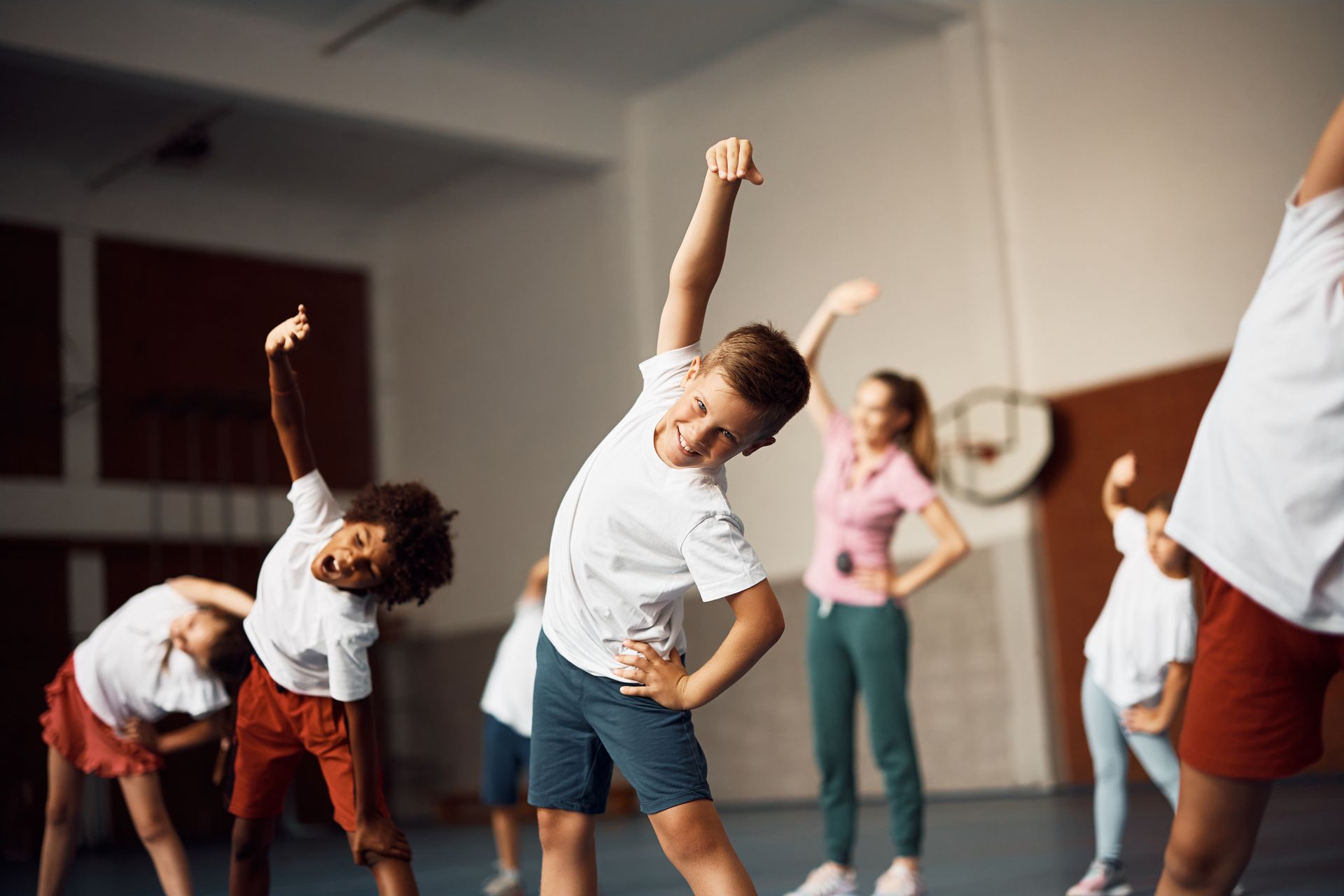CV&me
CV&me
Want more information?
CV&me
Latest news

By kkcol
•
July 18, 2023
Our kids need less time on devices and more time moving in school and out of school if we really care about their mental health! If we are truly looking for ways to help our kids with stress, anxiety, and depression, we should look to proven techniques that show benefits. We should not be spending money and time on trendy, unproven SEL “programs” that have not been able to prove any benefit after decades of broad implementation in school settings. Please read the research that proves movement and exercise benefit children in a variety of ways. Please ask your school board and administration to show proof of what they are implementing is beneficial to our students academic achievement and wellbeing. Nothing trendy or experimental should waste time or resources for our children. They deserve better! Mental Health Benefits of Exercise in Children Jan 28, 2015 Karen Dineen Wagner, MD, PhD Psychiatric Times, Vol 32 No 1 The target for physical activity in adolescents is 60 or more minutes of daily aerobic activity. But it is unlikely that the majority of youths achieve this goal. There was a time when children would play outdoors and get exercise by running and riding bicycles. In recent years, concerns about children’s safety, the popularity of video games and computers, and increased academic demands have contributed to the decline in outdoor play for children. Unless children are involved in sports, gymnastics, dance, or similar activities, they have limited involvement in exercise-related activities. Benefits of physical activity There is increasing evidence for mental health benefits of exercise in children. Hillman and colleagues 1 examined the effects of physical activity on fitness, brain function, and cognitive function in 221 children aged 7 to 9 years. The children were randomly assigned to either a 9-month after school physical activity program or a wait-list control group. The physical activity intervention was 2 hours in duration and focused on improvement of aerobic fitness by engaging in physical activities. The children participated in at least 70 minutes of moderate to vigorous physical activity, followed by a snack, rest period, and low organizational games such as tag. Pre and post-intervention measures included assessment of aerobic fitness and cognitive functioning. Aerobic fitness was assessed by a test of maximal oxygen consumption during a treadmill exercise. Cognitive functioning was evaluated through tasks that assessed attentional inhibition and cognitive flexibility. EEG recordings to deter-mine event-related brain potentials were obtained during the cognitive tasks. At the end of the 9-month intervention, the physical activity group showed greater aerobic fitness than did the wait-list control group. The physical activity group also demonstrated greater attentional inhibition and cognitive flexibility. On EEG assessments, only the physical activity group showed a larger P3 amplitude (indicative of greater attention) and a faster P3 latency (indicative of faster processing speed). Children who attended a greater number of the physical activity sessions had more changes in these brain activity measurements. ADHD and exercise Given these findings of improved attention for children who engage in a physical activity program, it would be important to know whether children with ADHD would show improved attention with exercise. Pontifex and colleagues 2 assessed the effect of a single bout of moderate-intensity aerobic exercise on children with ADHD. Twenty children aged 8 to 10 years with ADHD and a healthy matched control group participated in the study. In this within-participants design, children participated in a 20-minute session of either aerobic exercise or seated reading on a motor-driven treadmill. Measures of event-related brain potentials and cognitive tasks were assessed during both of these conditions. Both the children with ADHD and the control group showed greater response accuracy on attention control tasks following a single bout of exercise than following the seated reading session. EEGs indicated that children in both groups had larger P3 amplitude and shorter P3 latency after exercise than after seated reading. On measures of academic performance, children in both groups had greater improvement on tests of reading comprehension and arithmetic after exercise than after seated reading. The investigators suggest that single bouts of moderate-intensity aerobic exercise may be an additional treatment modality for children with ADHD. Moreover, short bouts of exercise during the school day may be a benefit to children in general. Depression and exercise The relationship between depression and exercise in children and adolescents has received recent attention. Kremer and colleagues 3 investigated the associations between physical activity, leisure-time screen use, and depressive symptoms. The data were obtained from the Healthy Neighbourhoods Study, a crosssectional survey of 8256 children and adolescents (mean age, 11.5 years) in Australia. The students completed an online self-report instrument. Students were asked a number of questions about their physical activity behavior, including number of days attending physical education classes; degree of activity during these classes; number of days of being very active after school and on the weekend; involvement in sports or other activities in school and outside of school; opportunities to be involved in sports, clubs, organizations, or other activities at school; and number of days in the past week that they were physically active for at least 60 minutes per day. The students also reported time spent watching television, using the computer, or playing video games on school days and weekend days. Depressive symptoms were assessed using the Mood and Feelings Questionnaire. Moderate to high depressive symptoms were reported by 33% of these youths. The odds of depressive symptoms were lower when there were greater opportunities for the youths to be involved in a sport or other activities at school outside of class, to be very active during physical education classes, and to play on sports teams both at school and outside of school. Youths who were physically active at least 60 minutes per day were also less likely to have depressive symptoms. Lower levels of leisure-time screen use (video game, computer, television) were also associated with lower depressive symptoms in adolescents. Can physical activity protect against depressive symptoms in adolescence? Toseeb and colleagues 4 examined the association between physical activity beginning at age 14 years and depressive symptoms at age 17 years. A community-based sample of 736 adolescents from the United Kingdom participated in this longitudinal study. Baseline levels of physical activity were evaluated using combined heart rate and movement sensing. Participants were requested to wear the monitor over a 5-day period including 2 weekend days. Participants completed the Mood and Feelings Questionnaire at baseline and at 3-year follow-up. A semistructured clinical interview to assess for current episodes of MDD was also administered at baseline and at follow-up. No association was found between physical activity at baseline and development of depressive symptoms at 3-year follow-up. The adolescents who were physically active at baseline did not have higher or lower depressive symptoms than the adolescents who were less physically active. Similarly, a diagnosis of MDD at 3-year follow-up was not predicted by physical activity at baseline. The investigators conclude that physical activity is not a protective factor in the development of depressive symptoms in adolescence. Conclusion Overall, studies provide support for the benefits of physical exercise in children and adolescents on executive function, brain activity, and depressive symptoms. According to Healthy People 2020, the target for physical activity in adolescents is 60 or more minutes of daily aerobic activity. 5 It is unlikely that the majority of youths achieve this target. The importance of physical activity should be promoted in the school setting as well as in after school activities. Parents should also encourage their children to be involved in physical activities. References : 1. Hillman CH, Pontifex MB, Castelli DM, et al. Effects of the FITKids randomized controlled trial on executive control and brain function. Pediatrics. 2014;134: e1063-e1071. 2. Pontifex MB, Saliba BJ, Raine LB, et al. Exercise improves behavioral, neurocognitive, and scholastic performance in children with ADHD. J Pediatr. 2013;162:543-551. 3. Kremer P, Elshaug C, Leslie E, et al. Physical activity, leisure-time screen use and depression among children and young adolescents. J Sci Med Sport. 2014;17:183-187. 4. Toseeb U, Brage S, Corder K, et al. Exercise and depressive symptoms in adolescents: a longitudinal cohort study. JAMA Pediatr. 2014;168:1093-1100. 5. US Department of Health and Human Services. Office of Disease Prevention and Health Promotion. 2008 Physical Activity Guidelines for Americans. http://www.health.gov/ paguidelines/guidelines. Accessed December 18, 2014.

By kkcol
•
July 18, 2023
For the 2023-2024 school year there will be 28 teachers writing curriculum for Studio Classrooms for Portrait of a Eagle for grades 6-12 and 3 teachers working on Digital Lit/Citizenship Framework for “full Year Course Maintenance” for K-12 at an additional cost of $28,620. I am not saying teachers doing extra work should not be compensated. I am suggesting that we utilize our smart, talented teachers and focus on academic learning. At a Curriculum Meeting in January, there were 2 presentations on the Studio Classrooms pilot program. One was given by the 7 th grade Spanish teacher. Studio Classroom seems to be used to administer the Portrait of an Eagle program, which is the District’s social-emotional learning program (SEL). The Spanish teacher admitted that the program “cuts down on content instruction.” This is what we have been saying all along about SEL watering down academic instruction time. SEL requires a lot of internal focus and will make students more narcissistic (constant focus on feelings) and less focused on facts and constructive action. James Lindsay defines SEL as the practice of psychology on groups of children in uncontrolled, non-therapeutic spaces by non-professionals. SEL will be used to shape students’ attitudes, values and beliefs to accept a particular (Marxist) worldview. This will be done through classroom discussion and written/online surveys and “assessments.” Students will have instruction on these “competencies” and assessed on them within the Studio Classroom curriculum. Students will be tracked on how they are scoring on these competencies and the data is being collected and used to move them through until they get the “correct” scores. Please educate yourself on what SEL really is and how educational agencies and consulting groups are appealing to emotion to sell billions of dollars of curriculum and programs to school districts, government and community agencies, and even churches. You can learn more about SEL on the New Discourses web site/podcasts: https://youtu.be/IKdJfJdcjgU The other pilot program teacher was Matt Billman, Human Anatomy and Physiology. Mr. Billman said the assessments are moving to “non-traditional” methods, such as group work. He stated the students were concerned how they were being assessed in these new subjective methods, as they should be! The students did not have quizzes or tests as usual. What did they actually learn? Everyone should ask how group work will affect their students’ learning and grades as they go through middle school and high school.